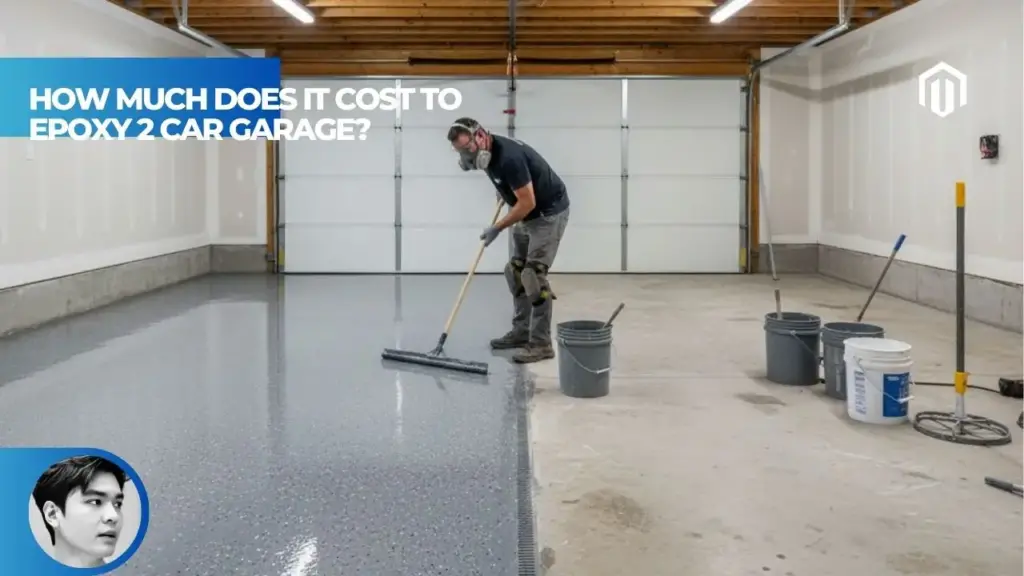You may also like:
- 【Explained】How Long Does It Take to Settle a Car Accident?
- 【Explained】How Long Does an Accident Stay on Your Record? (DMV vs. Insurance)
- 【Explained】What Happens When Your Car Is Totaled But Still Drivable?
- 【Explained】Do You Need Full Coverage on a Financed Car? (The Lender Requirement Explained)
- 【Explained】If Airbags Deploy, Is the Car Totaled? (The 2025 Cost vs. Value Guide)
Car accident settlements typically take 6-36 months to resolve due to factors like liability disputes, ongoing medical treatment until reaching maximum medical improvement (MMI), insurance company delay tactics, and case complexity involving multiple parties. You can expedite the process by maintaining complete documentation, hiring experienced legal representation, understanding your rights against insurance bad faith practices, and avoiding premature acceptance of lowball offers despite financial pressure.

Common Reasons for Car Accident Settlement Delays
Understanding why your settlement is delayed empowers you to take appropriate action. According to recent 2025 data, most car accident settlements resolve within 12-36 months, though simple cases may settle in 3-6 months while complex cases can extend beyond 36 months[1].
The insurance industry processes millions of claims annually, and delays have become increasingly common. Autvex automotive experts report that settlement delays affect over 60% of car accident victims, creating significant financial and emotional stress during recovery periods.
Liability Dispute and Unclear Fault Issues
Disputed fault cases take 24-36+ months to resolve, compared to 6-12 months for clear fault situations[1]. When parties disagree about who caused the accident, insurers must conduct extensive investigations before proceeding with settlement negotiations.
Liability disputes arise from several scenarios:
- Conflicting witness statements about the accident sequence
- Absence of police reports or video evidence
- Multiple vehicle collisions with complex fault distribution
- Comparative negligence claims reducing compensation percentages
- Weather or road condition contributions to the accident
- Commercial vehicle involvement requiring corporate investigations
Insurance companies exploit fault uncertainties to minimize payouts. They may argue you’re partially responsible, reducing your compensation under comparative negligence laws that vary by state.
Insurance Tactics and Bad Faith Insurance Practices
Insurance companies deliberately employ delay tactics to pressure victims into accepting lower settlements[2]. These bad faith practices violate their duty to process claims promptly and fairly.
Common insurance delay tactics include:
| Tactic | Purpose | Impact on Timeline |
|---|---|---|
| Repeated document requests | Create frustration | Adds 2-4 months |
| Changing adjusters frequently | Reset negotiations | Adds 3-6 months |
| “Ongoing investigation” claims | Avoid commitment | Adds 6-12 months |
| Denying valid claims initially | Force appeals | Adds 6-18 months |
| Ignoring communications | Create pressure | Adds 1-3 months per incident |
These tactics aim to exhaust your patience and resources, hoping financial pressure forces acceptance of inadequate offers. Insurance companies know that 70% of unrepresented claimants accept lowball settlements when facing mounting bills[2].
Complex Case Factors and Multiple Parties Involved
Multi-party accidents extend settlement timelines by 12-24 months beyond simple two-vehicle collisions[3]. Each additional party multiplies the complexity of liability determination and insurance coordination.
Complexity factors that delay settlements:
- Multiple insurance policies requiring coordination
- Commercial vehicle regulations and compliance issues
- Government entity involvement with sovereign immunity
- Out-of-state drivers with different insurance requirements
- Uninsured or underinsured motorist claims
- Product liability claims against vehicle manufacturers
Complex cases often require expert testimony from accident reconstructionists, medical specialists, and economic loss experts. Coordinating these professionals adds months to the settlement timeline.
Severe Injuries Requiring Ongoing Medical Treatment
Severe injury cases average 24-36+ months for settlement, compared to 6-12 months for minor injuries[1]. Settlements cannot accurately value claims until medical treatment concludes or stabilizes.
Injury severity impacts timeline through:
- Extended treatment periods for recovery
- Multiple surgeries requiring healing time
- Rehabilitation and physical therapy duration
- Specialist consultations and second opinions
- Future medical cost projections
- Permanent disability determinations
Traumatic brain injuries and spinal cord damage cases often exceed 36 months due to uncertain long-term prognoses. Insurers resist settling until understanding full medical costs and permanent limitations.
The Insurance Claim Process and Timeline
The claims process follows predictable stages, though duration varies significantly based on case specifics. Understanding each phase helps manage expectations and identify unnecessary delays.
How Long Does a Car Accident Settlement Typically Take
The average car accident settlement takes 12-24 months from accident to compensation[3]. However, this timeline varies dramatically based on multiple factors affecting your specific case.
Typical settlement timeline breakdown:
- Initial claim filing: 1-7 days post-accident
- Insurance investigation: 30-90 days
- Medical treatment phase: 3-18 months
- Demand letter preparation: 2-4 weeks
- Initial negotiations: 1-3 months
- Final settlement or litigation: 3-12+ months
Simple property damage claims may resolve within 30 days, while personal injury claims involving ongoing treatment extend significantly longer. Your actions during each phase directly impact overall duration.
Settlement Timeline from Accident to Compensation
Each settlement phase requires specific actions to maintain momentum[4]. Delays in any stage cascade through the entire process, extending your wait for compensation.
Critical timeline milestones:
- Immediate post-accident (0-72 hours): Report to insurance, seek medical care
- Investigation phase (1-3 months): Evidence gathering, witness statements
- Treatment phase (3-18 months): Medical care until MMI reached
- Negotiation phase (2-6 months): Demand letter through settlement offers
- Resolution phase (1-3 months): Final agreement to payment receipt
Missing deadlines or incomplete documentation at any stage triggers additional delays. Insurance companies exploit these gaps to justify extended “review periods.”
Insurance Adjuster Role in Delays
Insurance adjusters control claim pacing through their response times and documentation requests[5]. While adjusters claim heavy caseloads cause delays, many deliberately slow processes to benefit their employers.
Adjuster delay tactics include:
- Taking maximum allowable time for each response
- Requesting documents individually rather than comprehensively
- Scheduling inconvenient inspection times
- Disputing medical treatment necessity
- Challenging physician recommendations
- Demanding unnecessary independent medical examinations
Adjusters receive training and incentives to minimize payouts. Their performance evaluations often consider claim costs saved, creating inherent conflicts with fair claim processing.
Negotiations and Back-and-Forth Process
Settlement negotiations average 2-6 months once medical treatment concludes[4]. This back-and-forth process involves multiple rounds of offers and counteroffers before reaching agreement.
Negotiation stages typically include:
- Initial demand letter with full compensation request
- Insurance company’s lowball counteroffer (typically 10-30% of demand)
- Multiple counteroffers gradually increasing
- Mediation or arbitration if deadlock occurs
- Final settlement agreement drafting
- Release and payment processing
Each negotiation round may take 2-4 weeks as parties evaluate positions. Insurance companies deliberately slow responses, hoping financial pressure forces premature acceptance.
Medical Treatment and Maximum Medical Improvement (MMI)
Medical factors significantly impact settlement timelines. Insurers resist settling before understanding your complete medical picture and long-term prognosis.
Role of Ongoing Medical Treatment in Delaying Settlement
Active treatment prevents accurate claim valuation until reaching a stable endpoint[6]. Settling prematurely risks inadequate compensation for future medical needs and permanent limitations.
Treatment phases affecting timeline:
- Emergency and acute care (days to weeks)
- Surgical interventions (weeks to months recovery)
- Physical therapy and rehabilitation (3-12 months)
- Pain management programs (ongoing)
- Psychological counseling for trauma (6-18 months)
- Follow-up care and monitoring (years)
Insurance companies prefer waiting until treatment concludes to avoid responsibility for unexpected complications or additional procedures. This creates tension between immediate financial needs and long-term compensation adequacy.
Understanding Maximum Medical Improvement
MMI occurs when your condition stabilizes and further improvement is unlikely despite continued treatment[6]. This medical determination establishes the baseline for evaluating permanent damages and future care needs.
Key MMI considerations:
- Doesn’t mean complete recovery or pain-free status
- Indicates plateau in medical progress
- Allows assessment of permanent impairments
- Determines future medical requirements
- Establishes work capacity limitations
- Triggers disability rating evaluations
Reaching MMI typically takes 6-18 months for moderate injuries and 12-36+ months for severe cases. Doctors hesitate declaring MMI prematurely, knowing it limits future claim amendments.
Incomplete Medical Records Impact
Missing medical documentation delays settlements by 3-6 months on average[4]. Insurance companies exploit record gaps to dispute injury severity and treatment necessity.
Critical medical documentation includes:
- Emergency room records and imaging
- All physician visit notes
- Surgical reports and operative notes
- Physical therapy progress reports
- Prescription records and receipts
- Specialist consultation reports
- Work restriction documentation
Medical providers often delay record releases or charge excessive fees. Some require multiple requests before providing complete files, adding weeks to the process.
Documenting Injuries for Valuing the Claim
Comprehensive injury documentation increases settlement values by 40-60% compared to poorly documented claims[7]. Thorough records justify compensation demands and counter insurance company challenges.
Essential documentation strategies:
| Documentation Type | Purpose | Impact on Value |
|---|---|---|
| Pain journals | Track daily impact | Supports pain/suffering claims |
| Photo progression | Visual injury evidence | Demonstrates severity |
| Activity logs | Show limitations | Justifies disability claims |
| Witness statements | Corroborate impact | Validates lifestyle changes |
| Expert opinions | Medical prognosis | Establishes future needs |
Consistent, detailed documentation throughout treatment strengthens your negotiating position. Gaps or inconsistencies provide ammunition for insurance companies to minimize compensation.
Documentation and Evidence Issues
Evidence quality directly correlates with settlement speed and value. Insurance companies exploit documentation weaknesses to justify delays and reduce payouts.
Lack of Documentation Causing Delays
Poor documentation adds 6-12 months to average settlement timelines[3]. Insurance companies request extensive proof for every claim element, using missing items to stall proceedings.
Commonly missing documentation:
- Police report or incident number
- Witness contact information
- Scene photographs from multiple angles
- Vehicle damage estimates from certified shops
- Lost wage verification from employers
- Out-of-pocket expense receipts
- Mileage logs for medical appointments
Starting documentation immediately after the accident prevents scrambling for evidence months later. Insurance companies know memories fade and evidence disappears over time, deliberately delaying requests.
Gathering Evidence Requirements
Complete evidence packages expedite settlements by 3-6 months[8]. Organizing documentation systematically prevents redundant requests and demonstrates claim legitimacy.
Essential evidence categories:
- Liability evidence: Police reports, photos, witness statements, video footage
- Damage evidence: Repair estimates, total loss valuations, rental receipts
- Medical evidence: All treatment records, bills, future care plans
- Economic evidence: Pay stubs, tax returns, employer letters
- Quality of life evidence: Pre/post accident activity comparisons
Creating organized binders or digital folders for each category streamlines the process. Include summary sheets highlighting key information for quick reference.
Witness Statements and Their Importance
Independent witness statements strengthen claims by 50-70% and can expedite settlements by months[8]. Witnesses provide objective perspectives that counter disputed liability claims.
Effective witness statement components:
- Detailed accident description from their vantage point
- Driver behavior observations before impact
- Post-accident scene details and parties’ conditions
- Weather and road conditions at accident time
- Any statements made by involved parties
- Contact information for follow-up questions
Witnesses often become unavailable over time, making immediate statement collection critical. Video-recorded statements carry more weight than written summaries.
Medical Providers Documentation Needs
Medical providers must document specific elements for insurance acceptance[6]. Missing components trigger additional requests, delaying settlement by weeks or months.
Required medical documentation elements:
- Causation linking injuries to accident
- Objective findings supporting subjective complaints
- Treatment necessity explanations
- Prognosis including permanency assessments
- Work capacity evaluations
- Future treatment recommendations with costs
- Referral justifications to specialists
Providers unfamiliar with personal injury documentation may omit crucial elements. Educating them about requirements prevents delays and strengthens your claim.

Insurance Company Delay Tactics
Insurance companies systematically employ tactics designed to frustrate claimants into accepting inadequate settlements. Recognizing these strategies helps counter their effectiveness.
Can an Insurance Company Intentionally Delay a Settlement
Yes, insurance companies deliberately delay settlements as standard practice, despite legal obligations to process claims promptly[2]. These delays violate good faith duties but remain profitable strategies.
Legal standards for claim processing:
- Most states require acknowledgment within 10-15 days
- Investigation completion typically due within 30-40 days
- Payment or denial required within 60-90 days
- Reasonable explanations mandatory for all delays
- Bad faith penalties apply for unjustified delays
Despite regulations, insurers routinely exceed deadlines knowing few claimants pursue bad faith claims. The potential savings outweigh occasional penalties.
Low Settlement Offer Strategies
Initial offers average 10-30% of claim value as insurers test claimant desperation[2]. These lowball tactics exploit financial pressure and lack of legal knowledge.
Common lowball strategies:
- Claiming pre-existing conditions caused injuries
- Disputing medical treatment necessity
- Minimizing pain and suffering values
- Ignoring future medical needs
- Undervaluing lost income projections
- Excluding loss of enjoyment damages
Insurance companies train adjusters to make offers sound generous while concealing true claim values. They reference “average settlements” without explaining comparable cases or circumstances.
Financial Pressure Tactics
Insurers exploit financial vulnerability knowing 78% of Americans live paycheck-to-paycheck[5]. Delays create mounting pressure to accept any offer for immediate relief.
Financial pressure techniques:
- Delaying property damage payments affecting transportation
- Slowing medical payment authorizations
- Requiring extensive documentation for lost wages
- Offering “advance” payments with strings attached
- Suggesting loans against future settlement
- Emphasizing time value of money
These tactics particularly affect those without adequate savings or support systems. Insurance companies track economic indicators to time pressure maximally.
Under-Compensation Attempts
Insurance companies systematically undervalue claims using various justification tactics[7]. Understanding these methods helps counter their arguments effectively.
Under-compensation methods:
| Method | Tactic | Counter-Strategy |
|---|---|---|
| Computer programs | Use software minimizing values | Demand human review |
| Biased doctors | Employ favorable medical reviewers | Obtain independent opinions |
| Precedent manipulation | Cherry-pick low settlements | Research comparable cases |
| Venue shopping | Claim unfavorable jurisdictions | Establish proper venue |
| Policy misinterpretation | Narrowly interpret coverage | Obtain legal interpretation |
Studies show unrepresented claimants receive settlements averaging 40% less than those with attorneys, demonstrating systematic under-compensation attempts.
Legal Representation and Speeding Up Settlement
Legal representation fundamentally changes settlement dynamics. Insurance companies adjust tactics when facing experienced attorneys who understand their strategies.
Does a Lawyer Help Speed Up a Car Accident Settlement
Attorneys accelerate settlements by 3-6 months on average while securing 3.5 times higher compensation[7]. Legal representation signals serious intent and eliminates common delay tactics.
Ways lawyers expedite settlements:
- Preparing comprehensive demand packages upfront
- Setting firm negotiation deadlines
- Filing lawsuits to trigger settlement urgency
- Leveraging relationships with insurance counsel
- Understanding true claim values preventing lowballs
- Managing medical providers and evidence efficiently
Insurance companies recognize that attorneys won’t accept inadequate offers and can pursue litigation. This reality motivates more serious negotiation efforts.
Hiring a Lawyer Benefits
Legal representation provides multiple advantages beyond faster settlements[9]. Attorneys level the playing field against insurance company resources and expertise.
Key attorney benefits:
- No upfront costs: Contingency fees mean payment only upon winning
- Higher settlements: Average 3-4 times more than self-representation
- Reduced stress: Attorneys handle all communications and paperwork
- Medical coordination: Lawyers arrange treatment on liens
- Evidence preservation: Legal teams investigate and document thoroughly
- Negotiation expertise: Attorneys know true values and tactics
Autvex recommends consulting attorneys immediately after accidents, even for seemingly minor claims. Early representation prevents critical mistakes affecting case value.
Filing a Lawsuit When Necessary
Filing suit motivates settlement in 85% of cases without reaching trial[9]. Litigation demonstrates commitment and triggers insurance company trial cost considerations.
Lawsuit benefits for settlement:
- Creates court-imposed deadlines forcing action
- Enables discovery revealing insurance company documents
- Allows depositions exposing weak positions
- Triggers higher settlement authority levels
- Involves defense costs motivating resolution
- Provides trial option if negotiations fail
Most cases settle during litigation but before trial. The credible threat of trial verdict drives reasonable settlement offers.
Litigation Timeline Expectations
Litigation adds 12-24 months but often yields significantly higher settlements[9]. Understanding the litigation timeline helps evaluate whether to proceed.
Typical litigation phases:
- Filing and service (1-2 months): Complaint drafting and defendant notification
- Discovery phase (6-12 months): Document exchange and depositions
- Mediation attempts (1-2 months): Court-ordered settlement conferences
- Trial preparation (2-3 months): Expert preparation and motions
- Trial (1-2 weeks): Jury selection through verdict
- Post-trial (1-3 months): Appeals and payment processing
While lengthy, litigation often produces settlements 50-200% higher than initial offers. The investment of time yields proportional returns.
What You Can Do to Speed Up Your Settlement
Taking proactive steps significantly impacts settlement speed. Your actions either facilitate or hinder the process at every stage.
Communicating with Insurance Effectively
Strategic communication prevents unnecessary delays while protecting claim value[10]. Every interaction creates potential evidence affecting your case.
Communication best practices:
- Respond promptly to all legitimate requests
- Confirm all conversations in writing
- Maintain professional tone despite frustration
- Document dates, times, and participants
- Request specific response deadlines
- Escalate to supervisors when appropriate
Avoid providing unnecessary information or discussing fault. Insurance companies record conversations seeking admissions to reduce claim value.
Gathering Complete Documentation
Comprehensive documentation packages accelerate reviews by 2-4 months[3]. Anticipating insurance needs prevents repetitive requests and delays.
Documentation checklist:
- ✓ Police report and supplements
- ✓ All medical records chronologically organized
- ✓ Complete billing statements with codes
- ✓ Employment verification and wage loss calculations
- ✓ Photograph timeline showing injury progression
- ✓ Witness statements with contact information
- ✓ Expert reports supporting damages
Creating indexed binders or searchable digital files streamlines review. Include summary sheets highlighting critical information for quick access.
Following Medical advice Diligently
Consistent medical compliance strengthens claims and prevents insurance arguments about failure to mitigate damages[6]. Missing appointments or ignoring recommendations provides excuses for claim denial.
Medical compliance requirements:
- Attend all scheduled appointments
- Follow treatment plans exactly
- Complete prescribed therapy sessions
- Take medications as directed
- Document reasons for any gaps
- Obtain second opinions when recommended
- Maintain treatment until MMI reached
Insurance companies scrutinize medical records for non-compliance. They argue gaps indicate injuries aren’t serious or you’re responsible for prolonged recovery.
Legal Representation Decisions
Deciding when to hire an attorney impacts both timeline and compensation[9]. Early representation prevents mistakes, while delayed hiring may limit options.
Consider legal representation when:
- Injuries require extensive medical treatment
- Liability is disputed or unclear
- Multiple parties complicate claims
- Insurance offers seem inadequate
- Delays exceed reasonable timeframes
- Bad faith tactics become apparent
- Financial pressure mounts significantly
Most attorneys offer free consultations to evaluate cases. Even if ultimately self-representing, legal advice helps understand claim value and process.
After Settlement Agreement
Reaching agreement doesn’t mean immediate payment. Understanding post-settlement procedures prevents frustration during the final waiting period.
What Happens After Reaching Settlement Agreement
Settlement agreements trigger specific procedural requirements before payment release[10]. This process typically takes 2-6 weeks from agreement to check receipt.
Post-agreement steps:
- Settlement documentation drafting (3-7 days): Legal language confirming terms
- Review and revision period (3-5 days): Both parties examine documents
- Signature collection (2-5 days): All parties execute agreements
- Release preparation (2-3 days): Liability release documents created
- Insurance processing (7-14 days): Internal approval and check issuance
- Check delivery and clearing (3-7 days): Mailing and bank processing
Each step involves potential delays if parties don’t respond promptly. Holiday periods and weekends extend timelines further.
How Long Until Payment After Agreement
Payment typically arrives within 2-6 weeks of settlement agreement[10]. Various factors influence exact timing, including case complexity and lien resolution requirements.
Payment timeline factors:
| Factor | Impact | Typical Delay |
|---|---|---|
| Medical liens | Require negotiation | 1-3 weeks |
| Attorney trust account | Processing time | 3-5 days |
| Medicare/Medicaid | Reimbursement calculation | 2-8 weeks |
| Multiple defendants | Coordination needs | 1-2 weeks |
| Structured settlements | Annuity setup | 2-4 weeks |
Some states impose deadlines for insurance payment after agreement. Penalties apply for violations, though enforcement varies.
Unfair Settlement Prevention
Avoiding unfair settlements requires understanding true claim value before accepting offers[7]. Once signed, settlement agreements are nearly impossible to reverse.
Protection strategies:
- Research comparable case values
- Obtain multiple legal opinions
- Calculate total damages comprehensively
- Consider future medical needs
- Account for all economic losses
- Value pain and suffering appropriately
- Review settlement terms carefully
Never sign under pressure or without full understanding. Take time to review with trusted advisors before committing.
Financial Pressure Management
Managing finances during settlement delays prevents desperate acceptance of inadequate offers[5]. Planning for extended timelines reduces insurance company leverage.
Financial management strategies:
- Negotiate payment plans with medical providers
- Request treatment on attorney liens
- Apply for disability benefits if eligible
- Utilize health insurance for covered treatments
- Seek family support temporarily
- Consider litigation funding cautiously
- Maintain employment if possible
Avoiding financial desperation preserves negotiating power. Insurance companies lose leverage when financial pressure doesn’t force quick settlement.

Key Takeaways
- Average settlements take 12-36 months, with complex cases extending beyond
- Insurance companies deliberately delay using tactics to pressure lower settlements
- MMI must be reached before accurate claim valuation is possible
- Documentation quality directly impacts both timeline and compensation amount
- Legal representation accelerates settlements by 3-6 months while tripling compensation
- Bad faith practices are illegal but common without legal consequences
- Financial pressure management prevents accepting inadequate offers
Next Steps
Begin documenting everything immediately if you haven’t already started. Photograph injuries, maintain pain journals, and collect all medical records and bills. This foundation strengthens your position regardless of representation decisions.
Evaluate your case complexity honestly. Simple soft tissue injuries with clear liability may resolve without attorneys. However, serious injuries, disputed fault, or delays exceeding 3-6 months warrant legal consultation.
Research attorneys specializing in car accident cases. Look for experience with similar injuries and proven trial capabilities. Most offer free consultations and work on contingency, eliminating upfront costs.
Understand your state’s statute of limitations. Most states allow 2-3 years to file lawsuits, but evidence deteriorates quickly. Acting promptly preserves options even if initially attempting self-representation.
Resist quick settlement offers, especially within 30 days of accidents. Early offers never reflect true claim value since medical treatment remains incomplete. Patience typically yields significantly higher compensation.
Communicate strategically with insurance companies. Respond to legitimate requests promptly but avoid providing unnecessary information. Document all interactions and confirm verbal communications in writing.
Consider filing formal complaints with state insurance departments for bad faith practices. While rarely resulting in immediate action, documented complaints support potential bad faith claims.
Maintain medical treatment consistently until reaching MMI. Gaps in treatment provide insurance companies ammunition to minimize claims. Follow all medical advice and document any missed appointments with valid reasons.
Prepare financially for extended timelines. Arrange payment plans, utilize available resources, and avoid desperation-driven decisions. Insurance companies lose negotiating leverage when financial pressure doesn’t force quick settlements.
Finally, remember that insurance tactics following accidents are designed to minimize payouts, not help victims. Understanding their strategies and maintaining patience ultimately yields fair compensation for your injuries and losses.
Frequently Asked Questions
What are the most common reasons a car accident settlement is delayed?
Liability disputes, ongoing medical treatment until reaching maximum medical improvement (MMI), insurance company delay tactics, complex cases with multiple parties, and incomplete documentation are the primary causes of delays.
How long does a car accident settlement typically take?
Most settlements resolve within 6-36 months, with simple cases settling in 3-6 months and complex cases involving severe injuries or disputed liability taking 12-36+ months.
Can an insurance company intentionally delay a settlement to pressure me?
Yes, insurance companies may use delay tactics to create financial pressure, hoping victims accept lower offers. This constitutes bad faith insurance practices in many states.
What is the role of ongoing medical treatment in delaying a settlement?
Settlements typically wait until you reach maximum medical improvement (MMI) to accurately value total damages, including future medical needs and permanent disabilities.
What can I do if my car insurance settlement is taking too long?
Document everything, maintain consistent communication, consider hiring a personal injury lawyer, file complaints with state insurance regulators, and potentially pursue bad faith claims.
Does a lawyer help speed up a car accident settlement?
Yes, lawyers expedite settlements through professional negotiations, proper documentation, legal pressure on insurers, and their knowledge of typical timelines and tactics.
How does a dispute over who is at fault affect the timeline?
Fault disputes can add 6-12+ months as they require additional investigation, witness statements, expert testimony, and potentially trial proceedings to determine liability.
What happens after I reach a settlement agreement? How long until I get paid?
After agreement, payment typically arrives within 2-6 weeks, including time for paperwork processing, check issuance, attorney trust account clearing, and lien payments.
References
- Richman Law. (2025). Average Settlement Time for Car Accident Cases in 2025. Retrieved from https://richman-law.com/average-settlement-time-for-car-accident-cases-in-2025/
- Manning Law. (2025). The Impact of Bad Faith Insurance on Personal Injury Settlements. Retrieved from https://manninglaw.us/impact-of-bad-faith-insurance-on-personal-injury-settlements/
- CGHL Law Firm. (2025). Understanding the Average Car Accident Settlement. Retrieved from https://www.cghlawfirm.com/blog/understanding-the-average-car-accident-settlement/
- Tillmann Law. (2025). Car Accident Settlement Timeline: Oregon Guide for 2025. Retrieved from https://tillmannlaw.com/personal-injury-resources/car-accident-settlement-timeline/
- Parris Law. (2020). 9 Bad Faith Insurance Practices to Look Out For. Retrieved from https://parris.com/news/personal-injury/9-bad-faith-insurance-practices-to-look-out-for
- Smith Law. (2024). Maximum Medical Improvement (MMI) in Car Crash Claims. Retrieved from https://smithlawal.com/what-does-maximum-medical-improvement-mmi-mean-in-a-car-crash-claim/
- Case Peer. (2024). Personal Injury Law Statistics and Industry Trends for 2025. Retrieved from https://www.casepeer.com/blog/personal-injury-statistics/
- Ledger Law. (2025). How Long Does a Car Accident Settlement Take. Retrieved from https://ledgerlaw.com/how-long-does-a-car-accident-settlement-take/
- Grow Law. (2025). Personal Injury Statistics in 2025. Retrieved from https://growlaw.co/blog/personal-injury-stats
- Cordisco Saile. (2025). Average Settlement For a Car Accident in Pennsylvania. Retrieved from https://www.cordiscosaile.com/blog/average-settlement-for-a-car-accident/

I am a senior automotive analyst at Autvex. Expert vehicle evaluations, in-depth reviews, and objective analysis helping readers make informed automotive decisions with years of industry experience.









